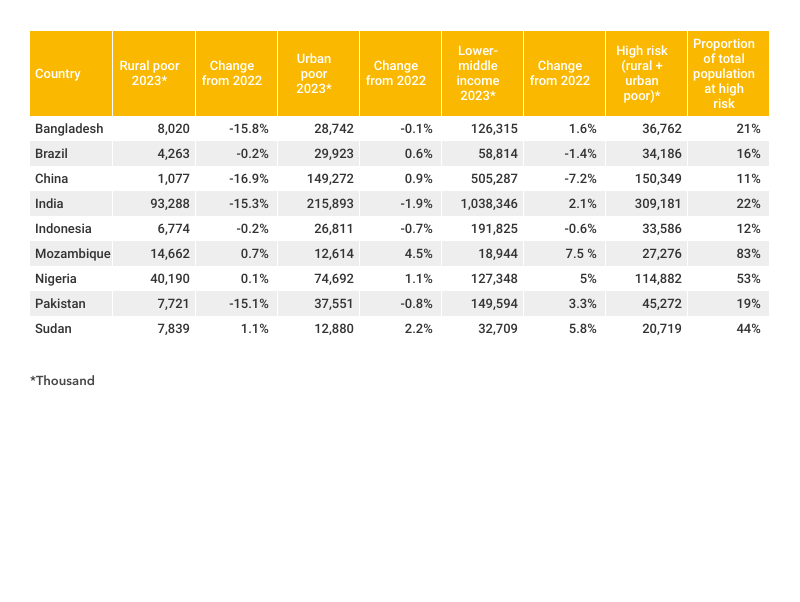Addressing gender and regional disparities in access to cooling
The annual Chilling Prospects report estimates that 1.12 billion poor people in rural and urban areas are at high risk due to a lack of access to cooling.
Every year, the Chilling Prospects report assesses the gaps in access to cooling worldwide, based on the available data and evidence collected by Sustainable Energy for All (SE4All). 77 countries were included in the Chilling Prospects 2023 analysis, among which 1.12 billion people among the rural and urban poor populations are considered to be at high risk due to a lack of access to cooling.
The lack of access to cooling is characterised by:
- among the rural poor: a lack of access to electricity and to a food or medical cold chain
- among the urban poor: limited or no access to electricity, which leads to food spoilage for those with access to a refrigerator; poor housing that cannot protect them from extreme heat.
Between 2022 and 2023, the number of people at high risk decreased from 1.14 billion to 1.12 billion, a decrease of about 20.4 million people. [1]
The number of people at risk has fallen significantly among the rural poor population in Asia and the Middle East, namely in Bangladesh (-16%) and Pakistan (-15%). It is worth noting that in Bangladesh, the implementation of the National Cooling Plan represents a milestone in the country’s response to extreme temperatures. Passive cooling strategies such as reflective roof paints or green roofs help reduce indoor temperatures in housing settlements, factory buildings and schools. [2] Nevertheless, the country remains at high risk given the rising temperatures in the region.
The analysis highlights 9 nine critical countries where 772.2 million people are at high risk due to a lack of access to cooling. These 9 critical countries are: Bangladesh, Brazil, China, India, Indonesia, Mozambique, Nigeria, Pakistan and Sudan. By proportion of the population, the risk is most pronounced in Mozambique, where 83% of the population is at high risk, followed by Nigeria (53%) and Sudan (44%). The number of poor rural people at high risk from lack of cooling continues to grow in Africa, likely due to slower-than-necessary progress in access to electricity and economic constraints.
The Chilling Prospects 2023 analysis also highlights the gender gap in access to cooling. There are an estimated 596 million women and 525 million men at high risk due to a lack of access to cooling, with women making up about 52% of the population at high risk in rural areas and 54% of the population at high risk in urban areas.

Sources
[1] SE4All. Chilling Prospects: Global Access to Cooling Gaps 2023. https://www.seforall.org/chilling-prospects-access-to-cooling-gaps-2023
[2] Hot Cities, Chilled Economies. Dhaka, Bangladesh. https://onebillionresilient.org/hot-cities-chilled-economies-dhaka/
